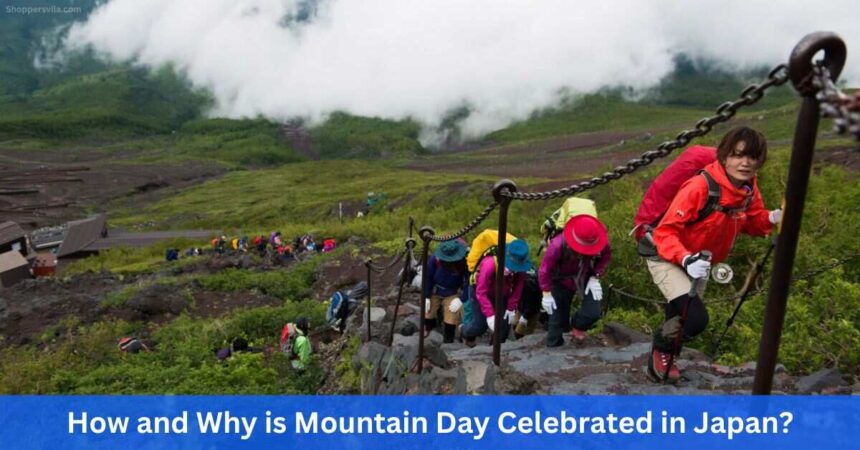Mountain Day on 11th August highlights Japan’s rich mountain culture and natural beauty. This article explores the origins, significance, activities, and reasons behind celebrating this Japanese national holiday.
Japan is known for its dramatic mountain landscapes. Mountain Day provides an opportunity to appreciate these peaks that shape the country’s terrain, history, and identity. Read on to learn why this nature holiday has struck a chord since its recent inception.
When and How Did Mountain Day Invented?
Mountain Day became an official public holiday in Japan in 2014 after advocacy from mountain enthusiasts. The first Mountain Day was celebrated on 11th August, 2016.
The Japanese Alpine Club along with other hiking and mountaineering groups lobbied the government to establish a day dedicated to the country’s mountains. 11th August was chosen as the date since the kanji characters for 8 and 11 resemble the words for “mountain” and “trees.”
These groups wanted to promote enjoyment and exploration of Japan’s plentiful mountain scenery and nature. Their advocacy paid off with Mountain Day becoming a holiday.
Why are Mountains Significant in Japanese Culture?
To understand why Mountain Day resonates in Japan, it helps to first recognize the cultural significance of mountains.
Mountains have been embedded in Japanese art, poetry, folklore, and spirituality for centuries. They serve as sacred spaces for practices like Shintoism and Buddhism. Pilgrimages to holy peaks like Mount Tate and Mount Haku trace back to the 7th century.
Beyond religion, Japan’s long history of reverence for nature is intertwined with its mountainous terrain. Mountains helped shape everything from architecture to cities that emerged on flat land near the sea. They have fundamentally formed the backdrop of Japan.
What Types of Mountain Areas Does Japan Have?
Japan consists of over 70% mountains. The landscape spans:
- 12,000+ mountain peaks across four main islands
- Volcanic mountains – 100 active volcanoes including iconic Mt. Fuji
- Hot springs numbering over 27,000, heated by volcanic activity
- Vast forested areas with hiking trails and ski resorts
- Dramatic alpine vistas in ranges like the Japan Alps
- Sacred mountains like the Three Holy Mountains
- Coastal hills framing beaches and seaside towns
This diverse topography gives Japan countless mountains to explore and appreciate.
How Do People Celebrate Mountain Day in Japan?
Since Mountain Day began recently, there are no historical customs or traditions. However, many ways to celebrate have quickly emerged:
- Climbing mountains and hiking various trails
- Visiting mountain shrines and temples
- Photographing picturesque mountain scenery
- Camping at mountain base camps and in the forests
- Exploring mountain art, poetry, and folk tales
- Trying local cuisine featuring alpine vegetables and medicines
- Participating in mountain-related festivals and ceremonies
- Visiting volcanoes and soaking in relaxing hot springs
The main purpose is to enjoy Japan’s natural beauty by experiencing the mountains firsthand.
Why is Appreciating Mountains Important for Japanese Citizens?
For Japanese citizens tired of crowded city life, Mountain Day promotes rejuvenation through connecting with nature. Here are some of the key benefits:
- Escaping urban areas and concrete jungles to enjoy fresh mountain air
- Finding tranquility and spirituality in Japan’s sacred mountain spaces
- Keeping active by hiking and climbing amidst beautiful scenery
- Learning outdoor skills and self-sufficiency from time in the mountains
- Reducing stress and gaining appreciation through exposure to nature
- Experiencing awe at the scale and beauty of mountains and volcanoes
- Bonding with family and friends through mountain activities
Mountain Day motivates the Japanese to replenish themselves through their vast mountains.
How Does Mountain Day Support Japan’s Economy?
Mountain Day provides an economic boost by encouraging travel and tourism to Japan’s mountainous areas and small towns:
- Generates revenue for hotels, ryokans, and restaurants in mountain regions
- Promotes use of mountain trail fees, guide services, equipment rentals
- Drives traffic to mountainous national parks, ski resorts, onsens
- Showcases local cuisine, crafts, and culture of remote mountain areas
- Encourages patronage of transportation links to the mountains
- Boosts awareness of lesser-known areas beyond famous peaks like Mt. Fuji
The holiday has become a mini high season for mountain tourism and recreation.
Conclusion
So finally, Mountain Day captures Japan’s deep connection to its plentiful peaks and volcanoes. The holiday originated in 2014 after advocacy from mountain groups. It gives Japanese citizens a chance to appreciate the natural beauty, adventure, spirituality, and tranquility the country’s mountains offer. The holiday provides economic benefits through mountain tourism as well. At its core, Mountain Day embodies Japan’s passion for its dramatic natural landscapes.
Frequently Asked Questions on Mountain Day 2023
1. Why is it always on 11th August?
11th August may have been selected because the kanji digits for 8 (八) which somewhat resemble “mountain” and 11 looks like “two trees.”
2. Are there any special Mountain Day meals?
Nothing specific, but people enjoy mountain vegetables, mushrooms, river fish, and regional cuisine.
3. Where are good places to travel in Japan for Mountain Day?
Mount Fuji, Japanese Alps, Daisetsuzan National Park, Shiretoko Peninsula, and anywhere with local peaks!
4. What should I do if the weather is bad on Mountain Day?
Visit mountain museums, try a rainy hike, relax at hot springs, or reschedule your mountain plans if stormy.
5. Can I climb mountains alone safely on Mountain Day?
Not recommended – go with experienced guides or groups. Use caution and proper gear.
6. How crowded do mountains get on Mountain Day?
Some congestion at extremely popular spots but plenty of lesser-visited places too. Arrive early.
7. How strenuous is climbing Mt. Fuji on Mountain Day?
The Fuji climb has an elevation gain of ~12388 feet. Most need 8-10 hours. It’s very challenging if you’re not an experienced hiker.
































